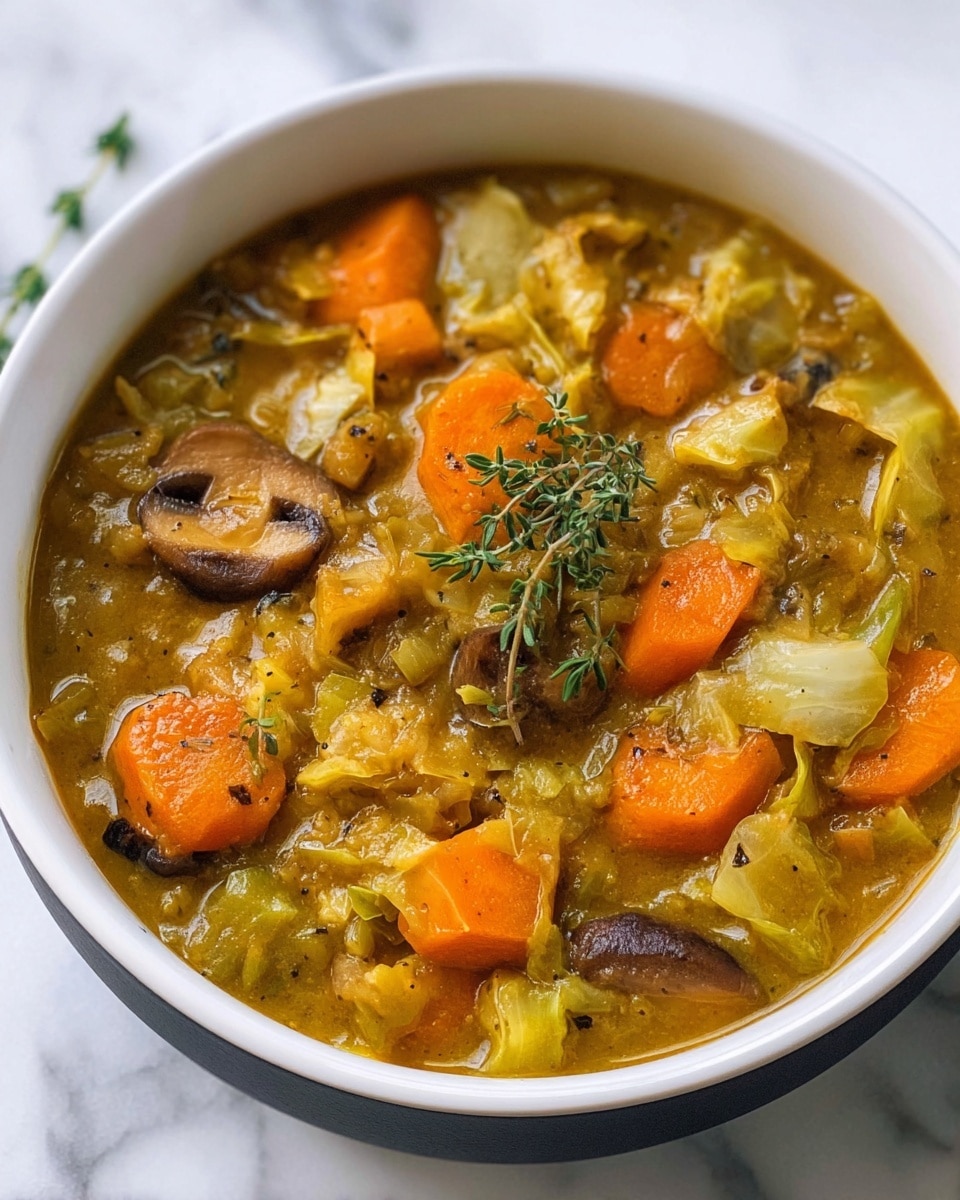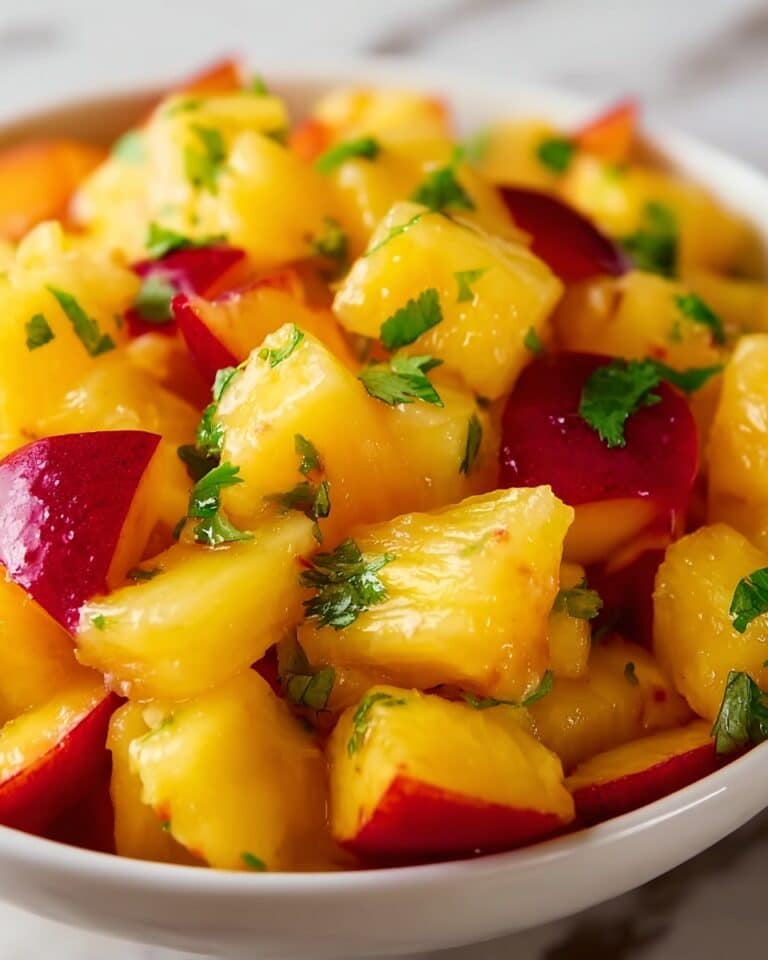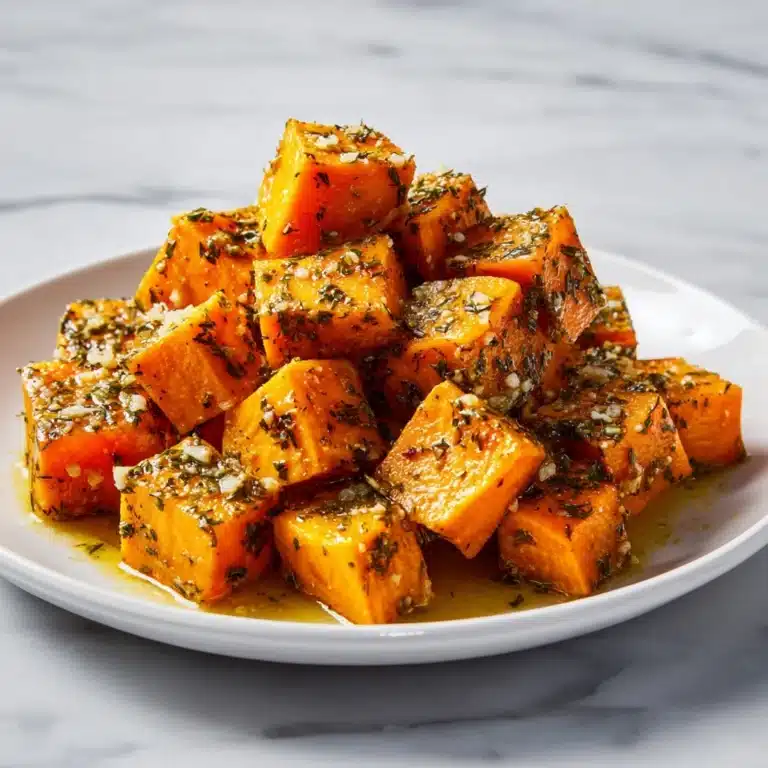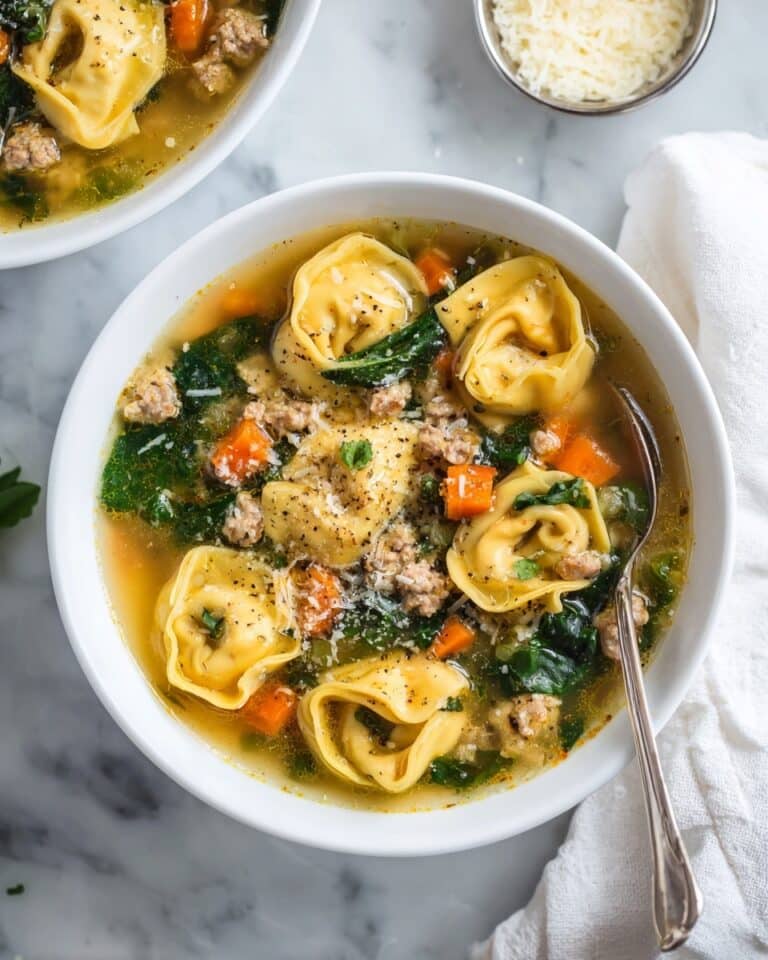Colonial Vegetable Pottage Recipe
If you are craving a heartwarming, nourishing dish that speaks volumes of history and wholesome flavors, look no further than this Colonial Vegetable Pottage Recipe. It’s a wonderful, rustic soup that combines simple yet vibrant ingredients to create a dish that warms both your body and soul. With its rich medley of root vegetables, tender greens, and earthy mushrooms simmered to perfection, each spoonful feels like a cozy hug on a chilly day. This recipe is a testament to how humble ingredients, carefully combined, can produce something extraordinarily comforting and satisfying for a crowd or a family meal.

Ingredients You’ll Need
The beauty of this Colonial Vegetable Pottage Recipe is in its straightforward, wholesome ingredients which come together effortlessly. Each one plays a crucial role in balancing texture, flavor, and appearance, making the final dish both colorful and deeply flavorful.
- Carrots: Provide a natural sweetness and bright orange color that enlivens the pottage.
- Onion: Adds a savory depth and aromatic foundation to the base of the soup.
- Root vegetable (parsnip or turnip): Offers an earthy, slightly sweet undertone with a creamy texture once cooked.
- Leek: Imparts a gentle onion-like flavor with a lovely mildness.
- Cabbage: Contributes a tender crunch and subtle sweetness that complements the other veggies.
- Mushrooms: Bring an umami richness and hearty texture that elevate the soup’s complexity.
- Dried thyme: Infuses a slightly minty, herbal aroma perfect for rustic dishes.
- Dried rosemary: Adds a piney, fragrant note that enhances the vegetable medley.
- Ground sage: Offers a warm, savory flavor that echoes traditional colonial cooking.
- Vegetable or chicken stock: Creates the flavorful liquid base that melds all ingredients harmoniously.
- Bay leaf: Provides subtle layered fragrance that rounds out the taste.
- Rolled oats: Thicken the pottage naturally while adding a slight nuttiness and chewy texture.
- Vinegar (apple cider recommended): Brightens the flavors with a tiny tang, balancing the earthiness.
- Kosher salt and freshly cracked black pepper: Essential for seasoning and bringing all the flavors to life.
How to Make Colonial Vegetable Pottage Recipe
Step 1: Cook Root Vegetables
Begin by combining the carrots, onion, root vegetables (either parsnip or turnip), and ¼ cup of the stock in a large pot or Dutch oven. Cooking them over medium heat for about 10 minutes allows these hearty vegetables to soften gently, releasing their natural sweetness and aroma, which lays the perfect flavor foundation for the dish.
Step 2: Add Remaining Vegetables and Herbs
Next, toss in the leeks, cabbage, mushrooms, dried thyme, rosemary, and ground sage. Stirring these in and cooking for another 5 minutes encourages the flavors to mingle, letting the mushrooms and leeks impart their savory goodness while the herbs start to infuse their fragrant notes into the mix.
Step 3: Simmer with Stock
Pour in the rest of the stock along with the bay leaf, then bring everything to a boil. Reducing the heat to a gentle simmer and partially covering the pot allows the ingredients to soften thoroughly over 30 minutes, with the bay leaf subtly enhancing the overall aroma and depth of flavor.
Step 4: Add Oats
Stir in the rolled oats and let the pot simmer uncovered for 20 more minutes. As the oats cook, they swell and thicken the pottage beautifully, giving it that satisfying, hearty consistency expected from a traditional colonial vegetable stew.
Step 5: Season and Serve
Finally, remove the bay leaf, stir in the vinegar to brighten the flavors, and finish by seasoning with kosher salt and black pepper to taste. Serve the pottage while it’s hot and inviting, perfect for sharing and savoring together.
How to Serve Colonial Vegetable Pottage Recipe

Garnishes
A sprinkle of fresh chopped parsley or thyme leaves brings a beautiful freshness and pop of color, while a drizzle of good quality olive oil can add an extra layer of richness. For a rustic touch, a small handful of toasted nuts or seeds on top can provide crunch and contrast to the creamy texture.
Side Dishes
This vegetable pottage pairs wonderfully with crusty artisan bread or warm, buttered rolls that are perfect for dipping into the thick, flavorful broth. A simple green salad with a tangy vinaigrette complements the pottage’s richness by adding crispness and brightness to the meal.
Creative Ways to Present
Consider serving the pottage in hollowed-out bread bowls for an impressive presentation that’s both practical and charming. Alternatively, ladle it into small mason jars for a cozy, rustic look perfect for picnics or casual gatherings where guests can help themselves. Adding a sprinkle of grated cheese on top can give a delightful melty twist.
Make Ahead and Storage
Storing Leftovers
Once cooled completely, store leftover Colonial Vegetable Pottage Recipe in an airtight container in the refrigerator. It will stay fresh and delicious for up to 4 days, making it a great option for batch cooking and weekday lunches or dinners. The flavors actually deepen over time, so reheated pottage is just as good if not better.
Freezing
This pottage freezes exceptionally well. Portion into freezer-safe containers or bags, leaving some space for expansion. You can keep it frozen for up to 3 months. When you’re ready, thaw overnight in the refrigerator before reheating gently on the stove or in the microwave.
Reheating
Reheat your pottage slowly over medium heat, stirring occasionally to prevent sticking. If it thickens too much while warming up, simply add a splash of water or stock to loosen the consistency back to your preferred creaminess. Taste and adjust seasoning as needed after reheating to revive the vibrant flavors.
FAQs
Can I use other vegetables in this Colonial Vegetable Pottage Recipe?
Absolutely! While the recipe highlights certain root vegetables and greens, feel free to include other seasonal vegetables like peas, beans, or squash. Just consider their cooking times to ensure everything cooks evenly and maintains a balanced texture.
Is this recipe suitable for vegetarians and vegans?
Yes, the Colonial Vegetable Pottage Recipe is naturally vegetarian and can easily be vegan by choosing vegetable stock instead of chicken stock. It’s a wonderfully inclusive dish that showcases plant-based ingredients in a hearty way.
Can I make this pottage thicker or thinner?
Definitely! Adjust the thickness by varying the amount of oats or stock. Add more oats for a thicker, stew-like consistency or pour in extra stock (or water) if you prefer it soupier. It’s very forgiving and adaptable.
How long does it take to prepare and cook?
The entire process takes about 1 hour and 10 minutes from start to finish, including simmering time. This ensures the vegetables are tender and the oats have cooked through, delivering that perfect thick and creamy texture.
What’s the purpose of adding vinegar at the end?
The vinegar adds a subtle brightness and slight tang that balances the earthy and savory flavors in the pottage, making the overall taste more layered and vibrant without overpowering the dish.
Final Thoughts
If you’re looking for a delicious, soul-satisfying dish that feels like a warm embrace from history, this Colonial Vegetable Pottage Recipe is a must-try. It’s simple yet bursting with flavor, packed with nutrients, and perfect for sharing with loved ones. Once you taste this hearty, comforting pottage, you’ll understand why it stands the test of time and remains a treasured classic.
Print
Colonial Vegetable Pottage Recipe
- Total Time: 1 hour 10 minutes
- Yield: 36 servings 1x
- Diet: Vegetarian
Description
A hearty and wholesome Colonial Vegetable Pottage made with a variety of root vegetables, leafy greens, mushrooms, herbs, and oats simmered in flavorful vegetable or chicken stock. This comforting, thick soup is perfect for a nourishing meal and serves a large group.
Ingredients
Vegetables
- 1 cup carrots, peeled and diced
- 1 cup onion, diced
- 1 cup root vegetable (parsnip or turnip), peeled and diced
- 1 cup leek, cleaned and roughly chopped
- 1 cup cabbage, roughly chopped
- 1 cup mushrooms (any variety), roughly chopped
Herbs and Seasonings
- ½ teaspoon dried thyme
- ½ teaspoon dried rosemary
- ½ teaspoon ground sage
- 1 bay leaf
- Kosher salt, to taste
- Freshly cracked black pepper, to taste
Other Ingredients
- 8 cups vegetable or chicken stock
- 1 cup rolled oats
- 1 tablespoon vinegar (such as apple cider vinegar)
Instructions
- Cook Root Vegetables: In a large pot or Dutch oven, combine diced carrots, onion, root vegetables (parsnip or turnip), and ¼ cup of the stock. Cook over medium heat for 10 minutes or until the vegetables begin to soften.
- Add Remaining Vegetables and Herbs: Add leeks, cabbage, mushrooms, dried thyme, rosemary, and ground sage to the pot. Cook for 5 minutes, stirring occasionally to combine the flavors.
- Simmer with Stock: Pour in the remaining stock and add the bay leaf. Bring the mixture to a boil, then reduce heat and let it simmer partially covered for 30 minutes allowing the flavors to meld.
- Add Oats: Stir in rolled oats and continue to simmer uncovered for 20 minutes, or until the oats are tender and the soup thickens to a pottage consistency.
- Season and Serve: Remove the bay leaf, stir in the vinegar, and season with kosher salt and freshly cracked black pepper to taste. Serve the pottage hot for a cozy and nourishing meal.
Notes
- This recipe serves 36, making it ideal for large gatherings or meal prepping.
- Vegetable stock makes the dish vegetarian; chicken stock adds richer flavor.
- For a gluten-free option, substitute rolled oats with certified gluten-free oats.
- You can vary the root vegetables based on seasonality and preference.
- Adjust vinegar type or amount to taste; apple cider vinegar provides a gentle acidity.
- Leftovers store well refrigerated for 3-4 days and also freeze successfully.
- Prep Time: 15 minutes
- Cook Time: 55 minutes
- Category: Soup
- Method: Stovetop
- Cuisine: Colonial American






